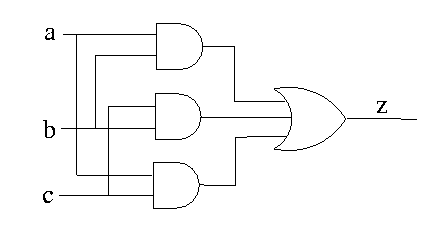Problem description:
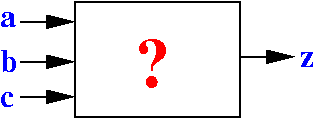
|
Step 1: list out every combination of the input values
a b c | z
---+---+---+---
0 0 0 |
0 0 1 |
0 1 0 |
0 1 1 |
1 0 0 |
1 0 1 |
1 1 0 |
1 1 1 |
|
Step 2: determine the output for each combination of input values
a b c | z
---+---+---+---
0 0 0 | 0 (< 2 input values = 1)
0 0 1 |
0 1 0 |
0 1 1 |
1 0 0 |
1 0 1 |
1 1 0 |
1 1 1 |
|
Step 2: determine the output for each combination of input values
a b c | z
---+---+---+---
0 0 0 | 0
0 0 1 | 0 (< 2 input values = 1)
0 1 0 |
0 1 1 |
1 0 0 |
1 0 1 |
1 1 0 |
1 1 1 |
|
Step 2: determine the output for each combination of input values
a b c | z
---+---+---+---
0 0 0 | 0
0 0 1 | 0
0 1 0 | 0 (< 2 input values = 1)
0 1 1 |
1 0 0 |
1 0 1 |
1 1 0 |
1 1 1 |
|
Step 2: determine the output for each combination of input values
a b c | z
---+---+---+---
0 0 0 | 0
0 0 1 | 0
0 1 0 | 0
0 1 1 | 1 (≥ 2 input values = 1)
1 0 0 | (And so on)...
1 0 1 |
1 1 0 |
1 1 1 |
|
Complete table:
a b c | z
---+---+---+---
0 0 0 | 0
0 0 1 | 0
0 1 0 | 0
0 1 1 | 1
1 0 0 | 0
1 0 1 | 1
1 1 0 | 1
1 1 1 | 1
|
End of Step 2: we have determined the output for each combination of input values
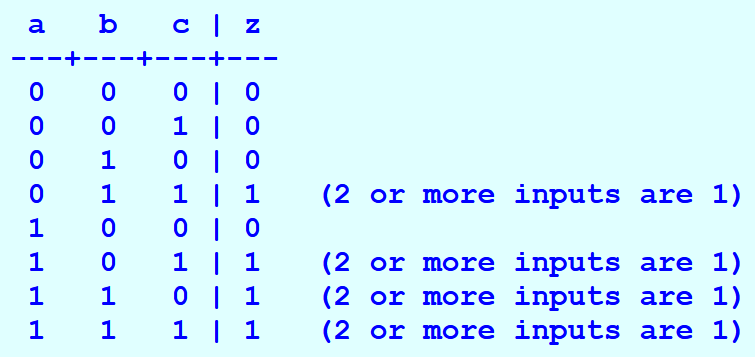
|
This table is called a logic table of the design function
Click on table to pull out
Step 1: draw the input signals and the output signal(s)

Step 2: add the NOT-gates to obtain all possible input combinations:
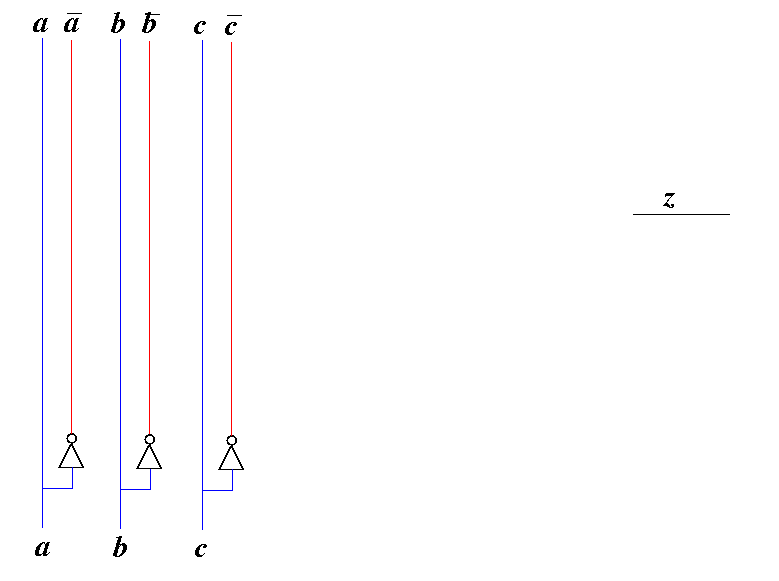
A combination of inputs is selected by connecting to the appropriate set of signals
Step 3: use one AND gate to compute each z=1 output in the logic table
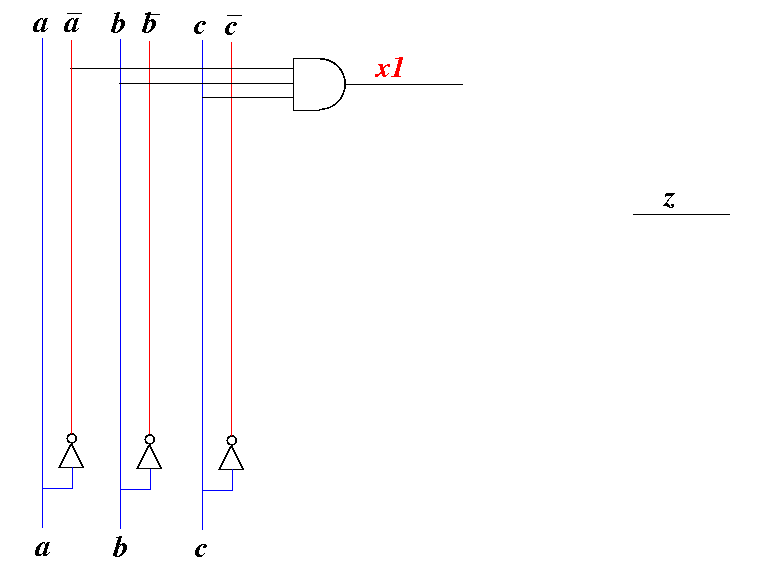
x1 = 1 if and only if a = 0, b = 1, c = 1
Step 3: use one AND gate to compute each z=1 output in the logic table

x2 = 1 if and only if a = 1, b = 0, c = 1
Step 3: use one AND gate to compute each z=1 output in the logic table
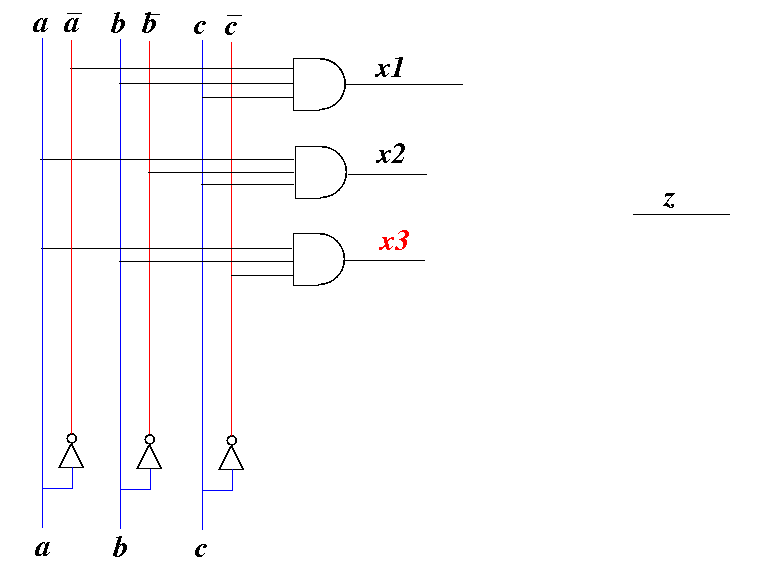
x3 = 1 if and only if a = 1, b = 1, c = 0
Step 3: use one AND gate to compute each z=1 output in the logic table

x4 = 1 if and only if a = 1, b = 1, c = 1
Step 4: use one OR gate to combine all cases for z=1

z = 1 if and only if for input values that form cases x1, x2, x3 and x4
Switch aa A '0' ZERO; Not aa A nA; Switch ba B '1' ZERO; Not ba B nB; Switch ca C '2' ZERO; Not ca C nC; And bb nA B C x1; And bb A nB C x2; And bb A B nC x3; And bb A B C x4; Or bd x1 x2 x3 x4 z; Probe be z; |
I will demo this circuit in class:

Circuit file: /home/cs355001/demo/circuits/majority
|
|
|
